*NURSING > QUESTIONS & ANSWERS > Milestone Chapter 30: Care of Patients with Noninfectious Lower Respiratory Problems (Concepts for I (All)
Milestone Chapter 30: Care of Patients with Noninfectious Lower Respiratory Problems (Concepts for Interprofessional Collaborative Care College Test Bank)
Document Content and Description Below
Chapter 30: Care of Patients with Noninfectious Lower Respiratory Problems Chapter 30: Care of Patients with Noninfectious Lower Respiratory Problems Ignatavicius: MedicalSurgical Nursing, 8th Edi... tion MULTIPLE CHOICE 1. A nurse assesses several clients who have a history of asthma. Which client should the nurse assess first? a. A 66yearold client with a barrel chest and clubbed fingernails b. A 48yearold client with an oxygen saturation level of 92% at rest c. A 35yearold client who has a longer expiratory phase than inspiratory phase d. A 27yearold client with a heart rate of 120 beats/min ANS: D Tachycardia can indicate hypoxemia as the body tries to circulate the oxygen that is available. A barrel chest is not an emergency finding. Likewise, a pulse oximetry level of 92% is not considered an acute finding. The expiratory phase is expected to be longer than the inspiratory phase in someone with airflow limitation. DIF: Applying/Application REF: 552 KEY: Respiratory distress/failure| assessment/diagnostic examination MSC: Integrated Process: Nursing Process: Assessment NOT: Client Needs Category: Safe and Effective Care Environment: Management of Care 2. A nurse cares for a client with arthritis who reports frequent asthma attacks. Which action should the nurse take first? a. Review the client’s pulmonary function test results. b. Ask about medications the client is currently taking. c. Assess how frequently the client uses a bronchodilator. d. Consult the provider and request arterial blood gases. ANS: B Aspirin and other nonsteroidal antiinflammatory drugs (NSAIDs) can trigger asthma in some people. This results from increased production of leukotriene when aspirin or NSAIDs suppress other inflammatory pathways and is a high priority given the client’s history. Reviewing pulmonary function test results will not address the immediate problem of frequent asthma attacks. This is a good intervention for reviewing response to bronchodilators. Questioning the client about the use of bronchodilators will address interventions for the attacks but not their cause. Reviewing arterial blood gas results would not be of use in a client between attacks because many clients are asymptomatic when not having attacks. DIF: Applying/Application REF: 553 KEY: Respiratory distress/failure| medication MSC: Integrated Process: Nursing Process: Assessment NOT: Client Needs Category: Physiological Integrity: Pharmacological and Parenteral Therapies 3. After teaching a client who is prescribed a longacting beta2 agonist medication, a nurse assesses the client’s understanding. Which statement indicates the client comprehends the teaching? a. “I will carry this medication with me at all times in case I need it.” b. “I will take this medication when I start to experience an asthma attack.” c. “I will take this medication every morning to help prevent an acute attack.” d. “I will be weaned off this medication when I no longer need it.” ANS: C Longacting beta2 agonist medications will help prevent an acute asthma attack because they are long acting. The client will take this medication every day for best effect. The client does not have to always keep this medication with him or her because it is not used as a rescue medication. This is not the medication the client will use during an acute asthma attack because it does not have an immediate onset of action. The client will not be weaned off this medication because this is likely to be one of his or her daily medications. DIF: Applying/Application REF: 554 KEY: Medication| patient education MSC: Integrated Process: Teaching/Learning NOT: Client Needs Category: Physiological Integrity: Pharmacological and Parenteral Therapies 4. After teaching a client how to perform diaphragmatic breathing, the nurse assesses the client’s understanding. Which action demonstrates that the client correctly understands the teaching? a. The client lays on his or her side with his or her knees bent. b. The client places his or her hands on his or her abdomen. c. The client lays in a prone position with his or her legs straight. d. The client places his or her hands above his or her head. ANS: B To perform diaphragmatic breathing correctly, the client should place his or her hands on his or her abdomen to create resistance. This type of breathing cannot be performed effectively while lying on the side or with hands over the head. This type of breathing would not be as effective lying prone. DIF: Applying/Application REF: 562 KEY: Respiratory distress/failure| patient education MSC: Integrated Process: Teaching/Learning NOT: Client Needs Category: Physiological Integrity: Physiological Adaptation 5. A nurse cares for a client who has developed esophagitis after undergoing radiation therapy for lung cancer. Which diet selection should the nurse provide for this client? a. Spaghetti with meat sauce, ice cream b. Chicken soup, grilled cheese sandwich c. Omelet, soft whole wheat bread d. Pasta salad, custard, orange juice ANS: C Side effects of radiation therapy may include inflammation of the esophagus. Clients should be taught that bland, soft, highcalorie foods are best, along with liquid nutritional supplements. Tomato sauce may prove too spicy for a client with esophagitis. A grilled cheese sandwich is too difficult to swallow with this condition, and orange juice and other foods with citric acid are too caustic. DIF: Applying/Application REF: 576 KEY: Cancer [Show More]
Last updated: 2 years ago
Preview 1 out of 14 pages

Buy this document to get the full access instantly
Instant Download Access after purchase
Buy NowInstant download
We Accept:

Reviews( 0 )
$11.00
Can't find what you want? Try our AI powered Search
Document information
Connected school, study & course
About the document
Uploaded On
Dec 22, 2021
Number of pages
14
Written in
Additional information
This document has been written for:
Uploaded
Dec 22, 2021
Downloads
0
Views
144

.png)


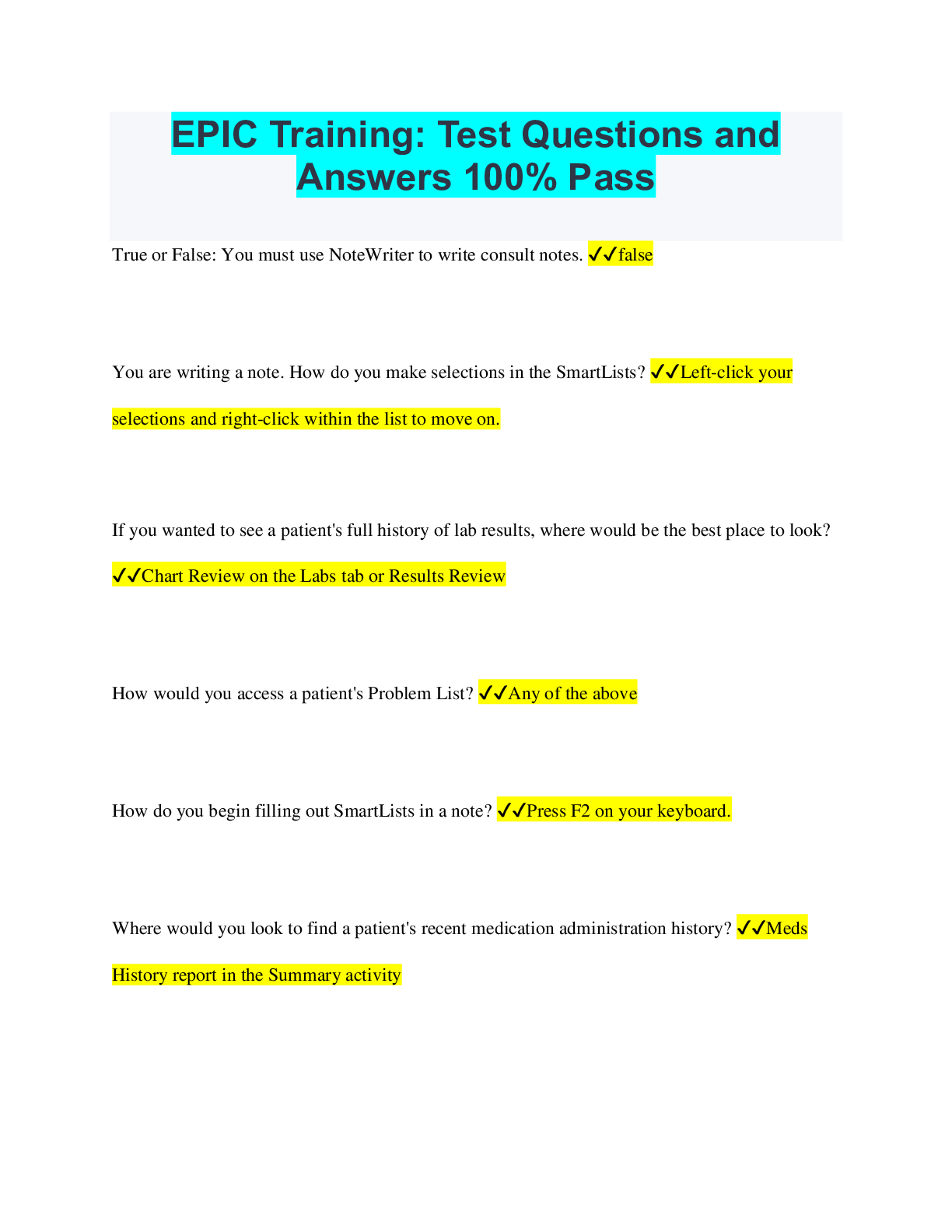
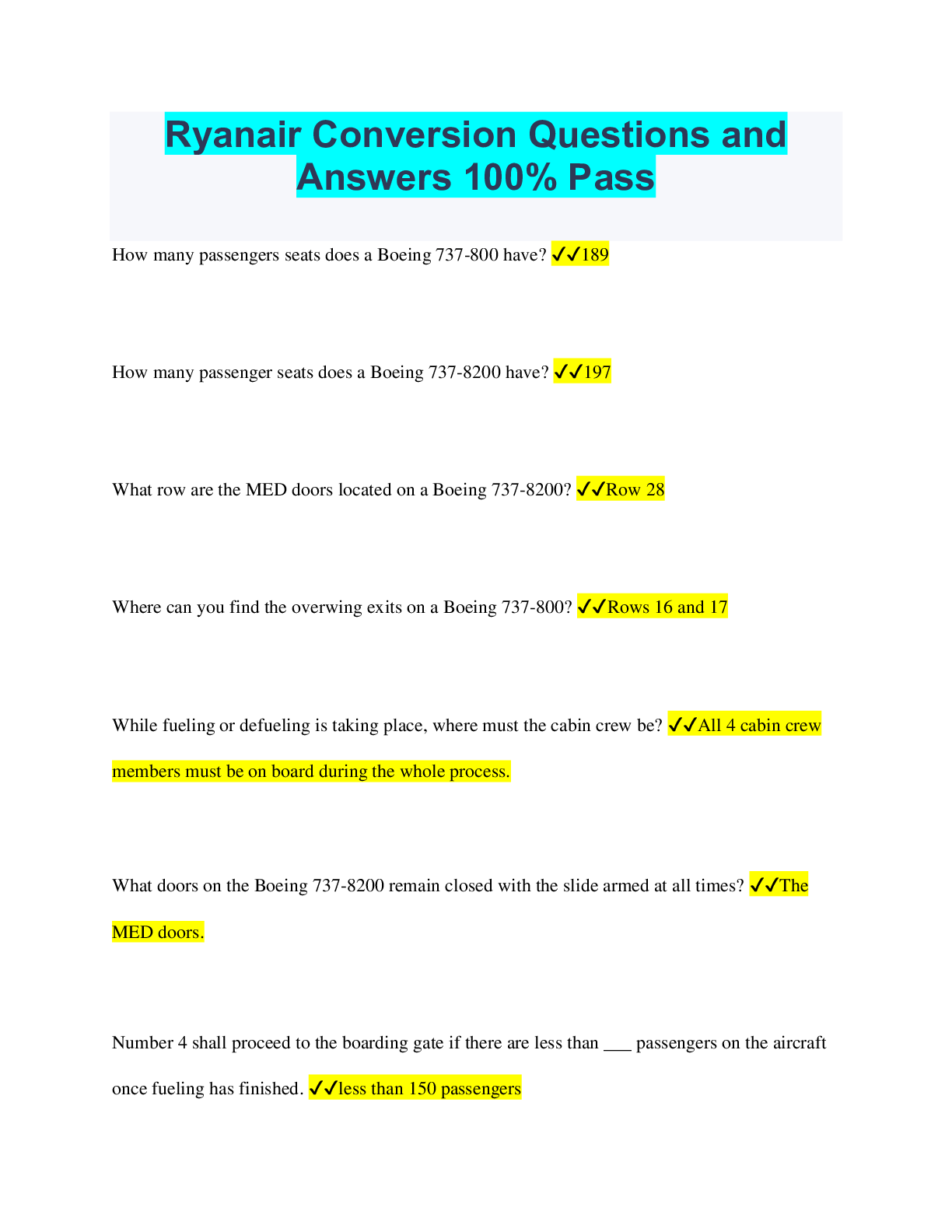
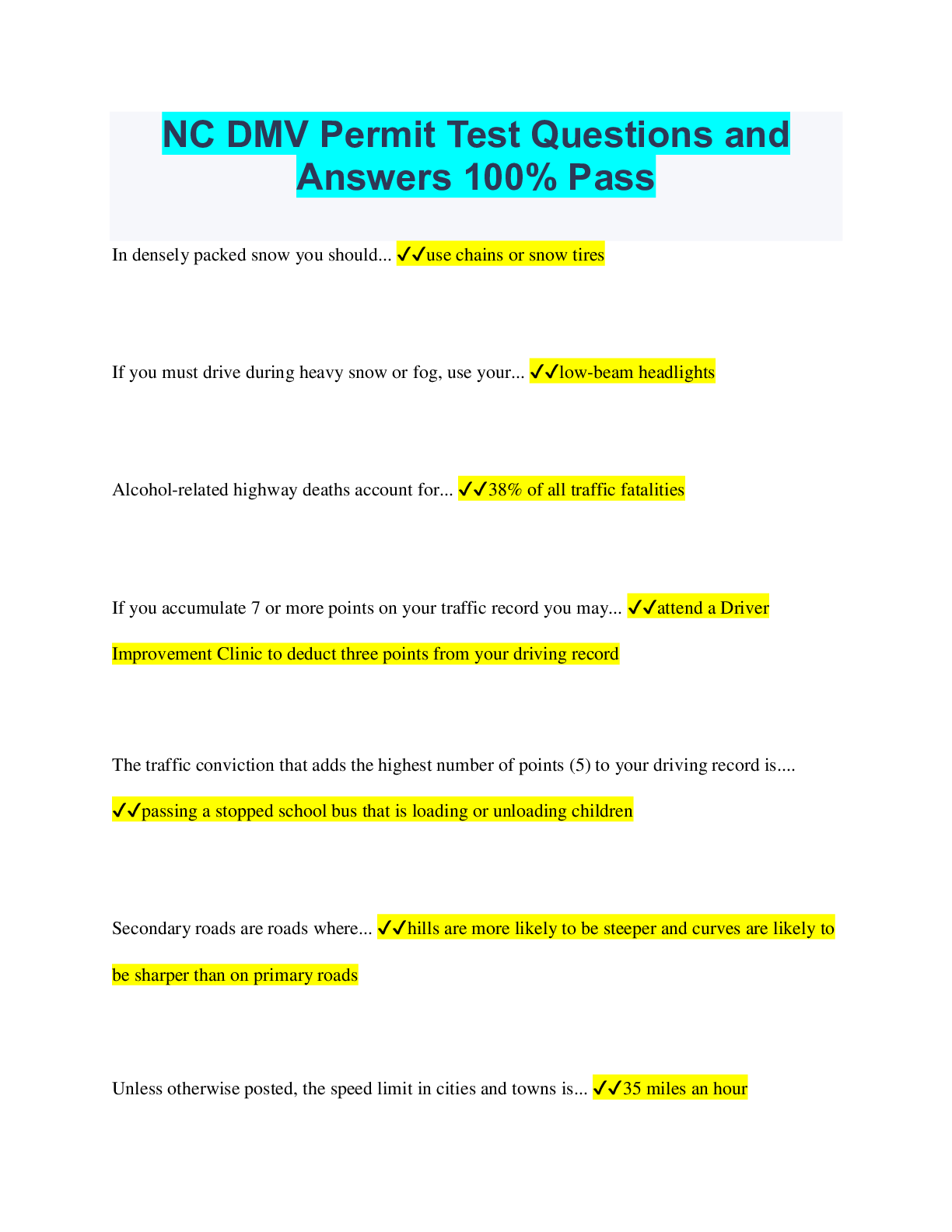
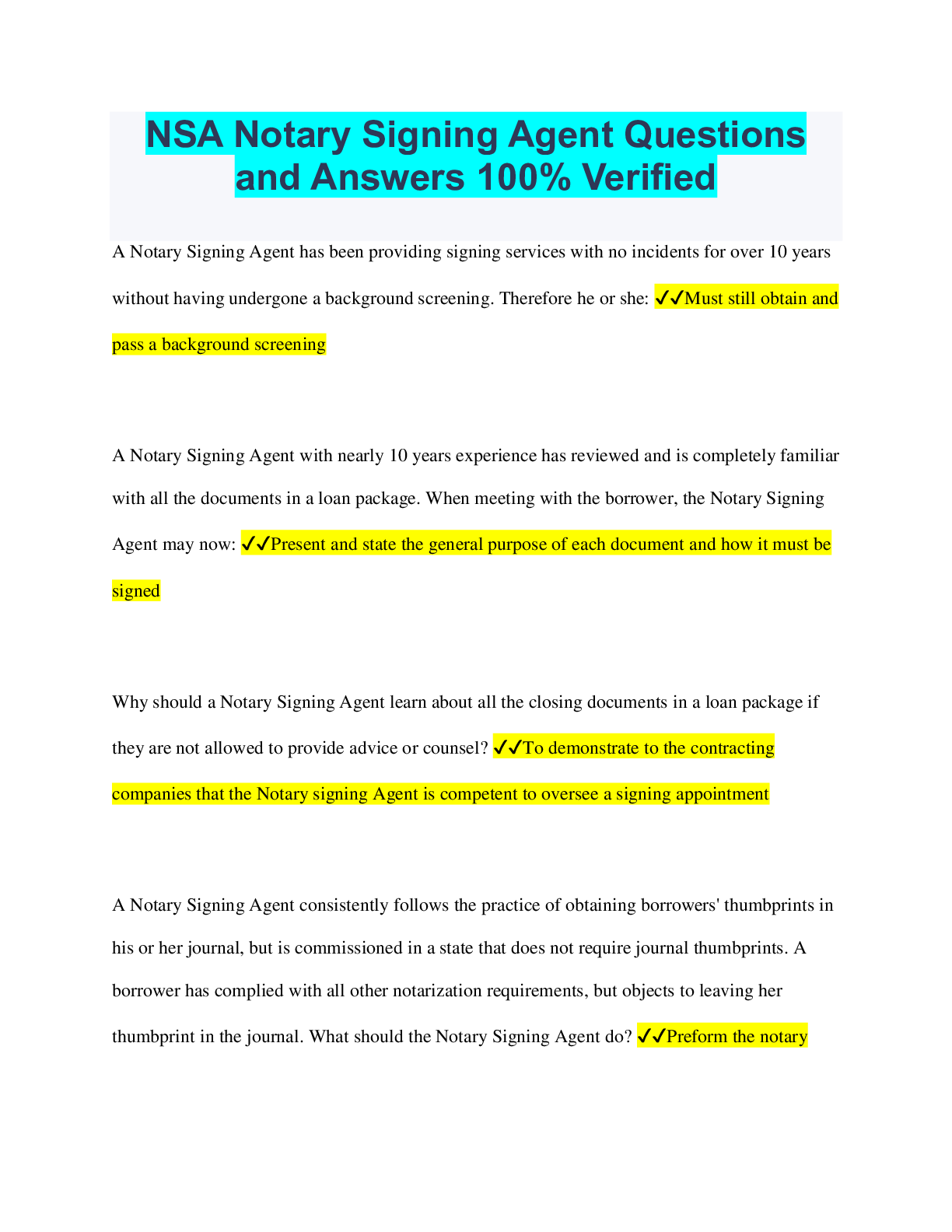
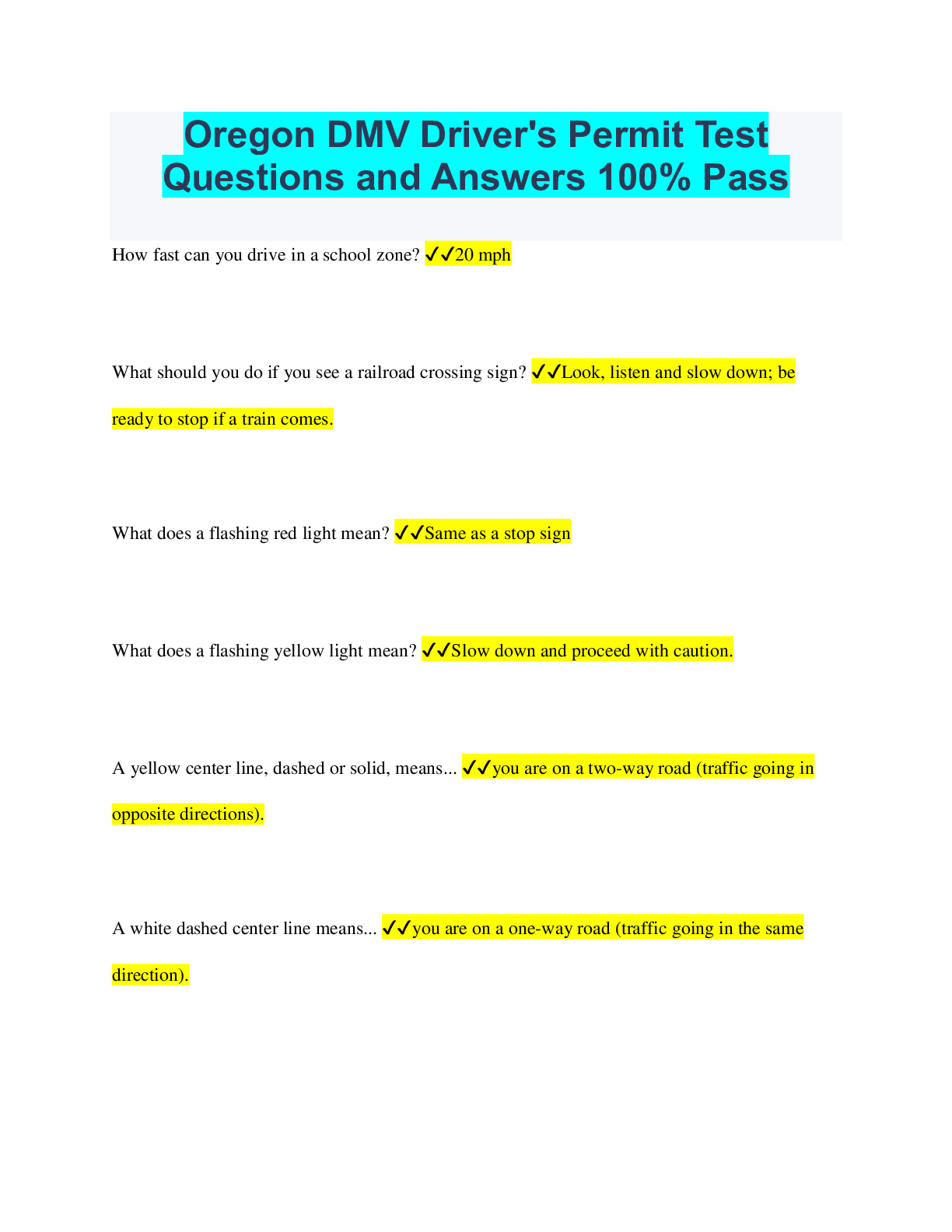
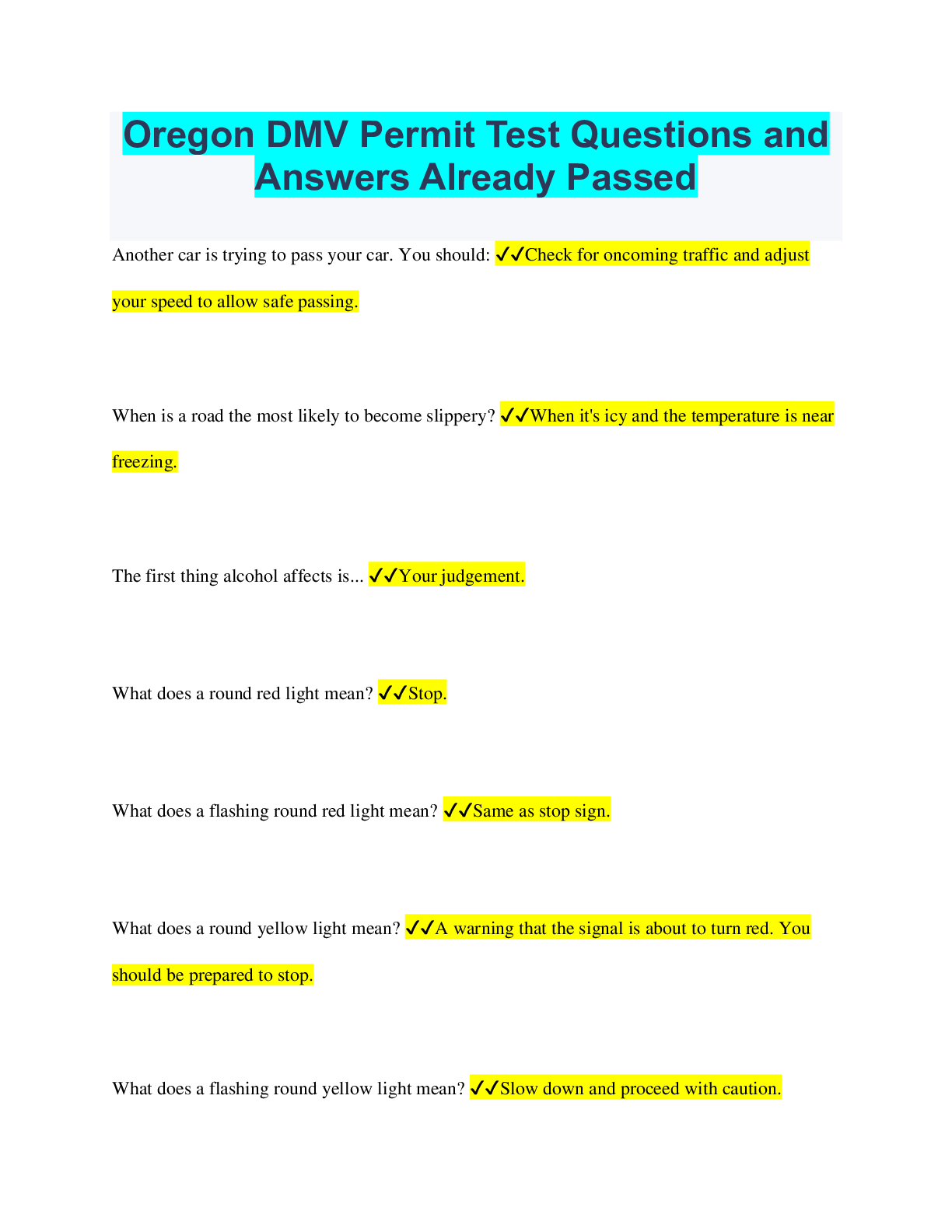
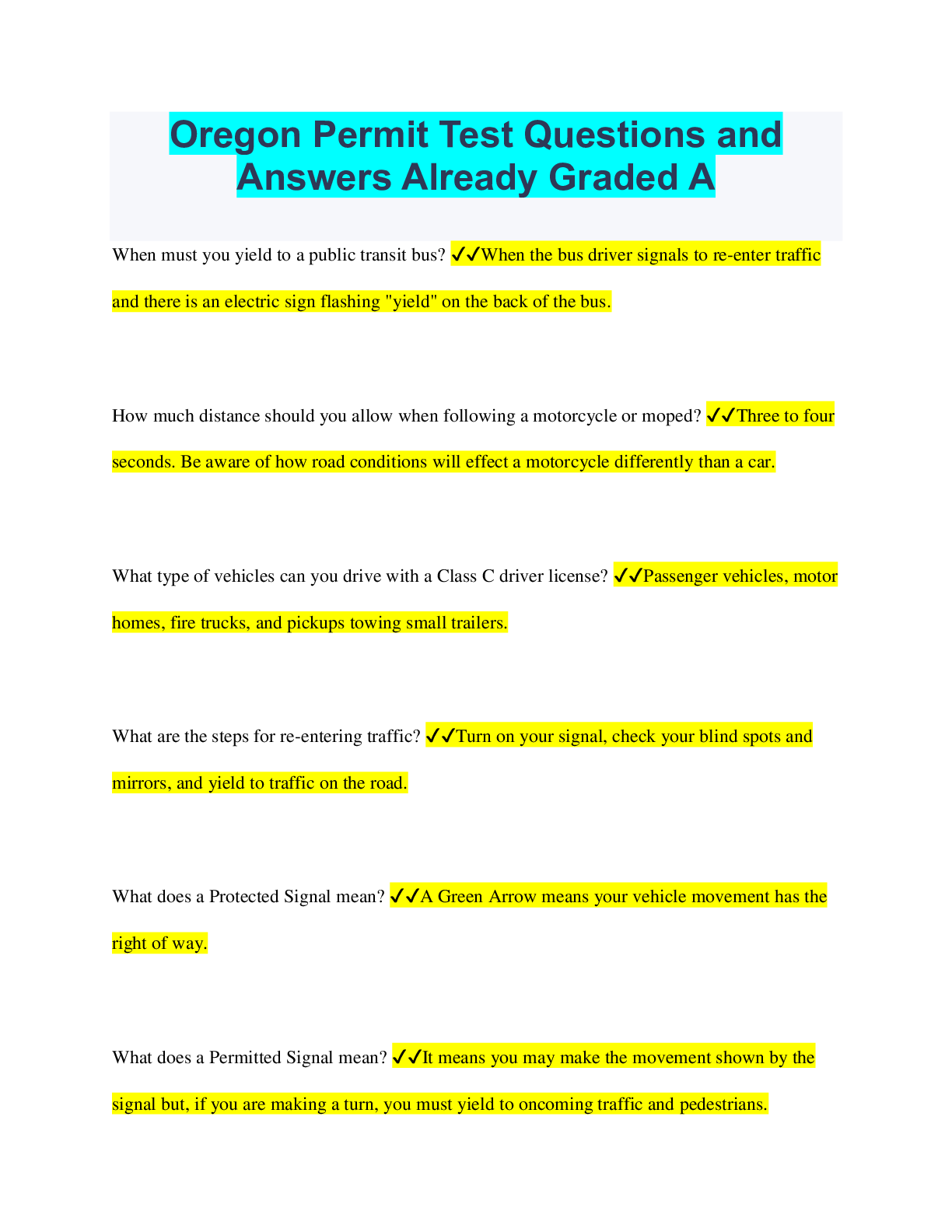
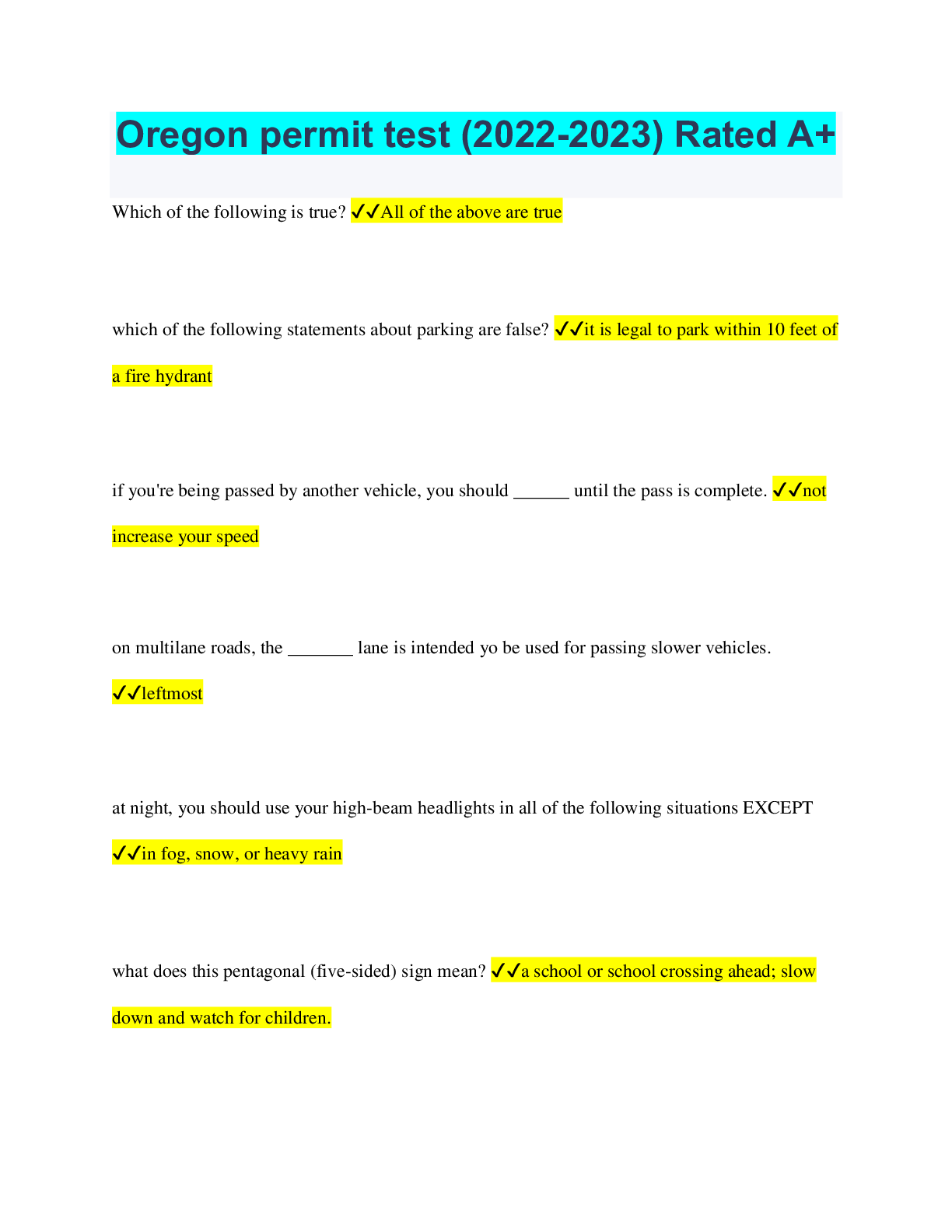
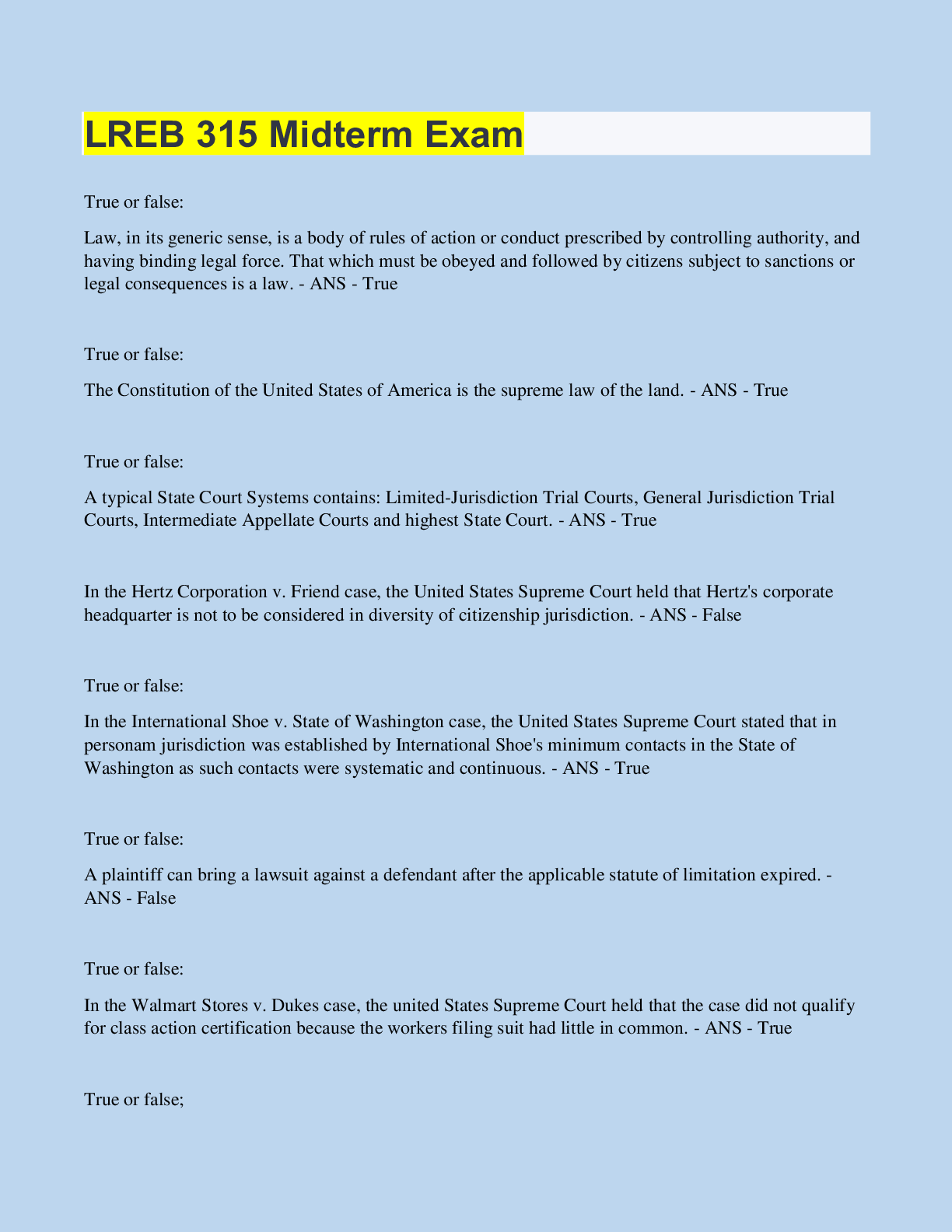



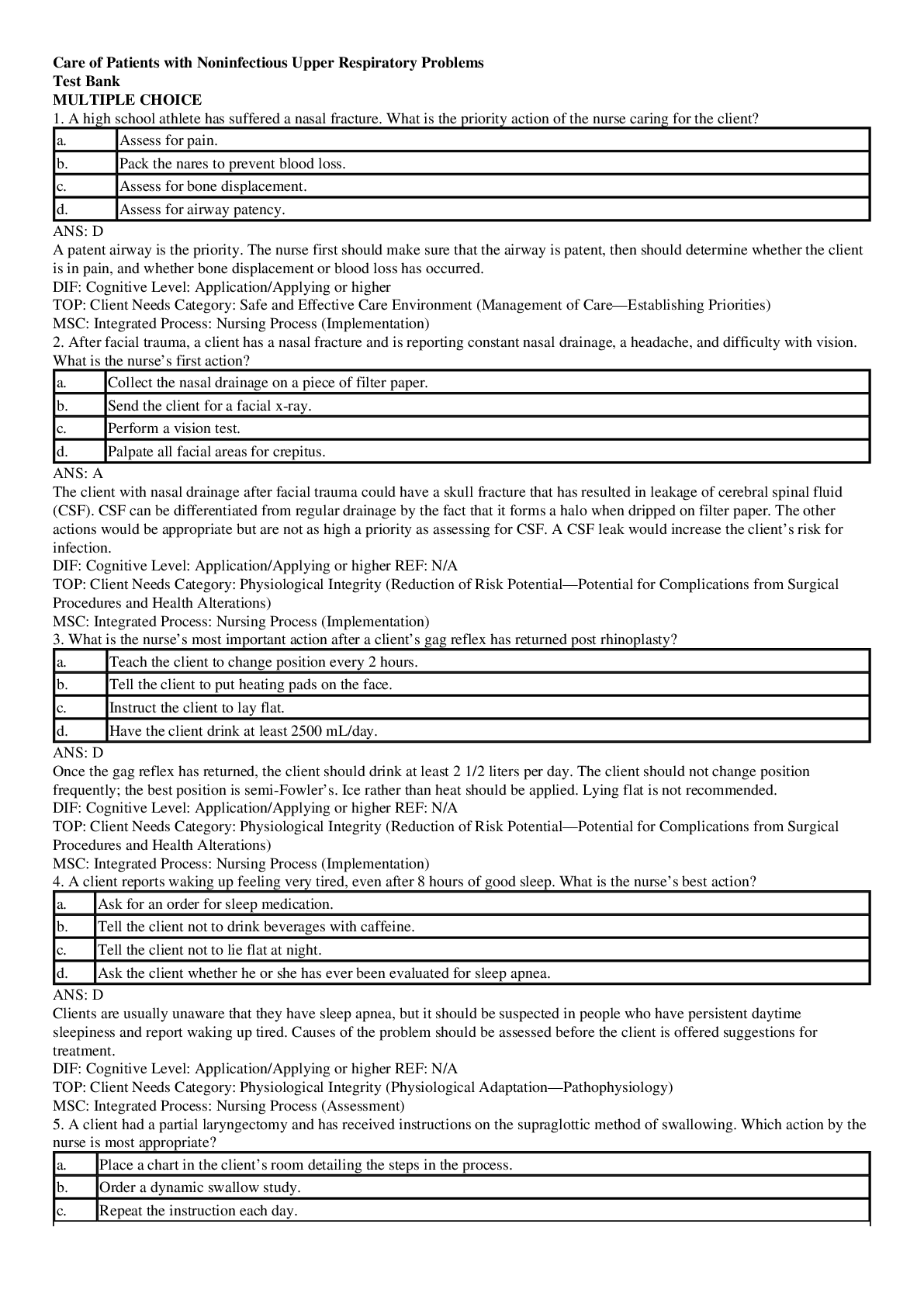
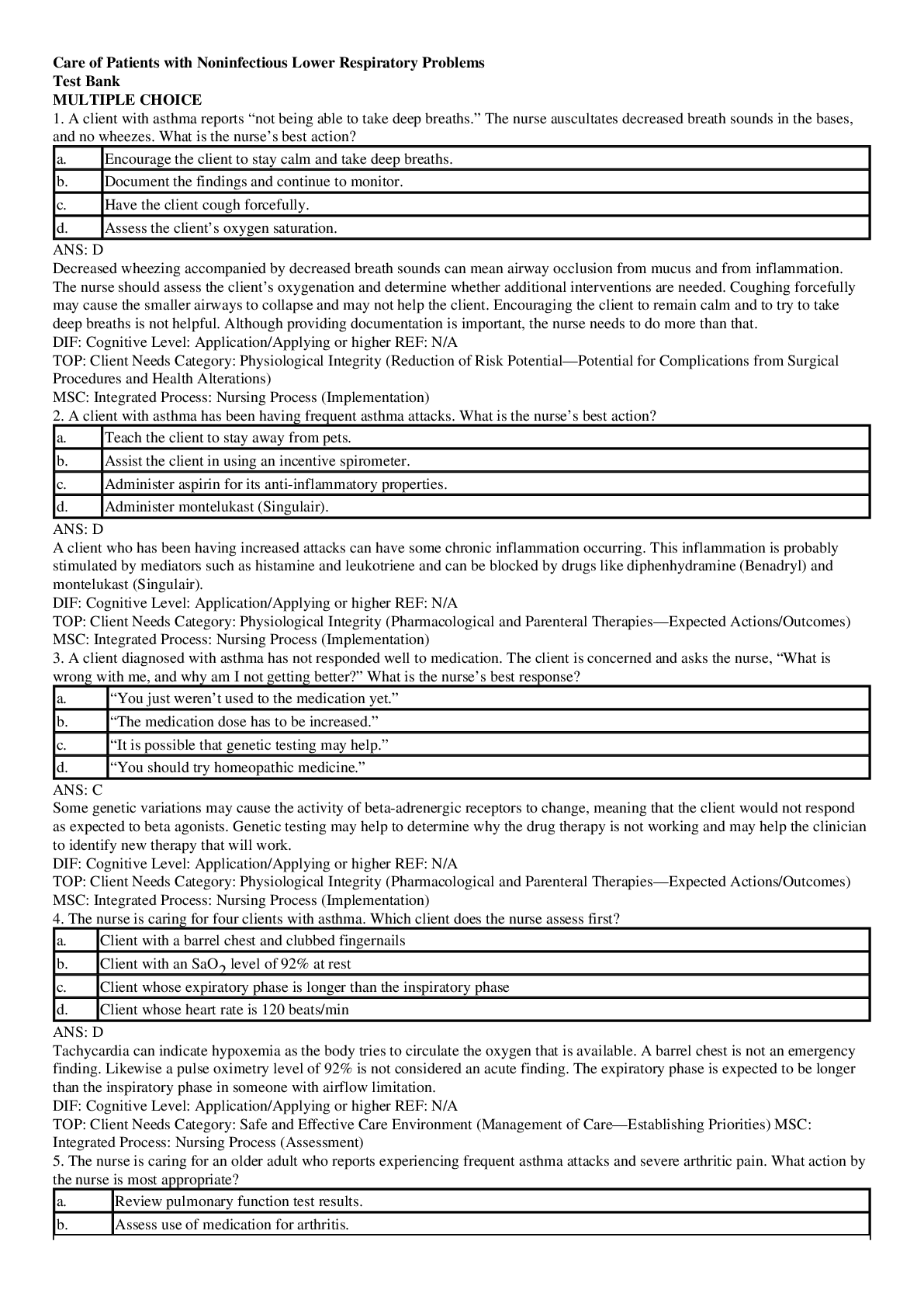
 Correct Study Guide, Download to Score A.png)
 Correct Study Guide, Download to Score A.png)
 Correct Study Guide, Download to Score A.png)

.png)

